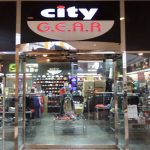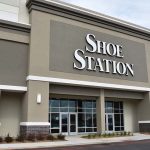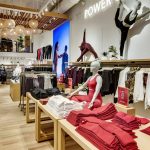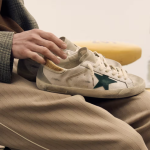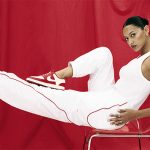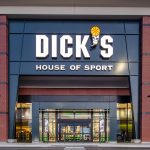Shares of Foot Locker Inc. lost 16 percent on Friday after the company missed on first-quarter profit and sales and provided lackluster guidance for the second quarter.
Calling the second quarter “just sort of not very exciting,” Foot Locker CEO Richard Johnson said changes to merchandise plans, including shifts in launches, would also hold back the second quarter. “So, the biggest shift in the second quarter is related to products that we now know are shifting out of the quarter.”
Shares of Foot Locker closed Friday at $44.39, down $8.44, or 16.0 percent.
The company reiterated its previously stated full-year outlook, including sales, gross margin and SG&A but reduced its EPS guidance to an increase in the high-single digits, down from a double-digit advance provided in February.
Foot Locker said the EPS adjustment was solely based on share repurchase activity to date.
In the quarter ended May 4, earnings rose 4.2 percent to $172 million, or $1.52 a share. Excluding charges recorded in connection with the company’s pension matter, non-GAAP earnings eased 0.6 percent to $173 million, or $1.53, from $174 million, or $1.45. Wall Street’s consensus estimate had been $1.61.
Comparable-store sales increased 4.6 percent, short of Wall Street’s consensus of 5.5 percent.
Total sales increased 2.6 percent, to $2.08 billion, down from Wall Street’s consensus estimate of $2.11 billion. Excluding the effect of foreign exchange rate fluctuations, sales increased 4.7 percent.
On the call, Lauren Peters, EVP and CFO, said all regions and channels contributed to the comp growth in the quarter. By month, comps grew mid-single digits in February, also rose mid-single digits in March despite Easter shifting to April, and accelerated to high single-digit growth in April with the benefit of Easter.
By channel, store comps were up 2.9 percent while direct to customer (DTC) gained 14.8 percent. As a percent of sales, DTC rose to 15.4 percent from 13.9 percent last year, reflecting recent investments and initiatives to drive growth. Store traffic was down low-single digits overall while conversion improved.
In North America, Champs Sports led the way with a low double-digit comp gain. Foot Locker U.S. and Foot Locker Canada were each up mid-single digits and Eastbay posted a low single-digit gain. Internationally, Foot Locker Pacific led the gains, with comps up double-digits. Foot Locker Europe produced a mid single-digit increase, its third consecutive quarter with a comp gain. Runners Point and Sidestep returned to growth as each posted a low single-digit comp.
Kids Foot Locker posted a low single-digit comp decline due in part to limited quantities of high-demand apparel. Footaction was down high-single digits due to softer demand in men’s footwear.
Among categories, footwear delivered mid single-digit comp gains while apparel was up low-single digits. In accessories, fashion bags were strong but that impact was offset by declines in socks and hats, leading to a double-digit decline.
Within footwear, women’s belted out a low double-digit increase. Children’s footwear was up high-single digits and men’s increased mid-single digits. Average selling prices in footwear were flat in the quarter while units were up high-single digits.
Men’s classics posted strong double-digit gains and men’s running was up high-single digits. Trends in men’s basketball improved during the quarter with comps down slightly. Overall drivers were broad-based with gains in Nike, Puma, Adidas, Fila, Vans, and Jordan.
In apparel, the low single-digit gain was led by men’s, which grew mid-single digits while women’s was down low-single digits and children’s decreased low-double digits. Average selling prices in apparel were up high-single digits, while units were down mid-single digits and reflects the company’s more premium apparel strategy. Branded assortments continued to drive apparel with gains in tees and fleece from Nike, Champion, Jordan and Fila. Men’s shorts also picked up, led by Nike and Champion.
Gross margins increased to 33.2 percent in the quarter from 32.9 percent a year ago. Merchandise margin decreased 20 basis points while leverage on fixed occupancy and buyer’s compensation expenses added 50 basis points of improvement. The merchandised margin was impacted by the higher mix of DTC which incurs higher freight expense.
SG&A expense rate increased to 20.0 percent from 19.0 percent, largely reflecting the strategic investments in digital capabilities and infrastructure as well as pressures related to higher minimum wages. The year-ago quarter also included a one-time benefit of approximately $5 million from insurance recoveries related to Hurricane Maria
Inventories at the close of the quarter were up just 0.1 percent compared to the 2.6 percent reported sales increase. On a currency-neutral basis, inventory increased 1.7 percent compared to the 4.7 percent currency-neutral total sales growth. Said Peters, “Our inventory remains fresh and productive and we are well positioned to continue flowing new product in Q2.”
Johnson called out progress the company is making on four “key strategic imperatives”: elevating the customer experience, investing for long-term growth, driving productivity, and leveraging its employee base.
On elevating the customer experience, he called out the launch through Nike of Home and Away platforms in Dallas, Seattle, and Philadelphia; that brand’s annual Air Max Day celebration; and a Jordan Nostalgia Pack. With Adidas, key launches included the Game of Thrones Ultra Boost range and a Marvel collection tied to the release of the Avengers movie.
Champ Sports aligned with Fila and Nickelodeon to channel 1990s’ nostalgia with an exclusive Rug Rats collection. Vans’ Off The Waffles collection drew on a collaboration with popular restaurant Sweet Chick.
Supporting storytelling, the company continue to invest in a number of big events, including the launch of the Discover Your Air Network aimed at Air Max fans, several initiatives around Women’s History Month, and a mobile House of Hoops courtside concept featuring NBA stars at NBA All-Star Weekend in Charlotte.
FootLocker rolled out its new FLX membership program, which offers rewards for spending across banners, at Lady Foot Locker in the U.S. and Foot Locker Netherlands. An expanded all-banner rollout is expected later in 2019.
In terms of investing for long-term growth, the third North American Power Store opened in Philadelphia and its first in Europe in Milan. More than a dozen Power Stores are expected to open in 2019 with additional locations in New York, Los Angeles, Frankfurt and Melbourne. Said Johnson, ‘All stores are designed to connect with and celebrate their local communities with special activation spaces, localized product, dedicated women’s and kids’ spaces, and more.”
In Asia, a newer priority for growth, a store opened in Singapore’s Jewel Mall at Changi Airport, its fourth in Singapore. The company remains on track to open 15 stores in Asia in 2019.
To drive productivity, RFID technology is being rolled out across Europe to particularly improve inventory management. A new point of sale solution has been installed in nearly all of its U.S. doors and its live in almost 40 percent of its Europe locations. The system, according to Johnson, helps with “data capture, FLX enrollment and redemption, email receipts, and improved order tracking which brings me to our fourth strategic imperative, to leverage the power of our people.”
For the second quarter, which is typically the lowest volume quarter of the year with no big call to action shopping events, a low to mid-single digit comp gain is now expected versus a mid-single gain previously. Gross margins are expected to be flat to down 20 basis points.
For the full year, Foot Locker continues to expect to deliver mid-single digit comp gains with 20 to 40 basis points of gross margin improvement. The SG&A rate is expected to increase 80 to 100 basis points in the second quarter but improvement in SG&A deleverage through the back half is expected to delever SG&A by 40 to 60 basis points for the full year, in line with previous guidance.
In the Q&A session, Johnson assured analysts that the first-quarter’s sales, margin and SG&A rate levels were “generally in line with what we expected” despite results falling short of analyst targets.
Regarding that lower comp expectations for the second quarter after the company had guided mid-single digit comps across quarters this year, Johnson said it’s “not abnormal” to see some shifts in how launch dates arrive. The CEO said, “Normally there are some things that flow back in the quarter when things flow out and as we see the second quarter right now there’s been a couple of shifts out that we have not seen opportunities to flow things back in.”
With the second quarter also being its lowest-volume quarter, Johnson expressed confidence that Foot Locker would still achieve mid single-digit comp growth for the year despite tough comparisons. Comps grew 9.7 percent in Q419 and 2.9 percent in Q319.
Johnson said the “product pipeline is compelling with new concepts and collaborations coming soon.” Anticipated launches include a Nike Summer Blockbuster platform featuring lifestyle shoes that tell the story of NBA stars Jayson Tatum, Devin Booker, and De’Aaron Fox as well as the release of Giannis Antetokounmpo’s first signature shoe.
“We see the product flow and again the mid-single digits for the year,” Johnson assured analysts on the outlook. “Third quarter is shaping up nicely with the back to school season and holiday, I believe there’s going to be a lot of heat in the market place. So, again the shifts out of Q2 are the only thing that we really changed our thought process around and clearly they go out of the quarter. So that’s a negative in Q2 but some real positives elsewhere.”
Photo courtesy Foot Locker





